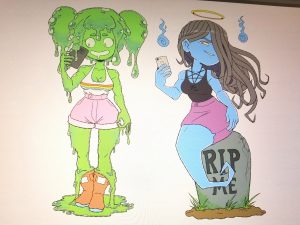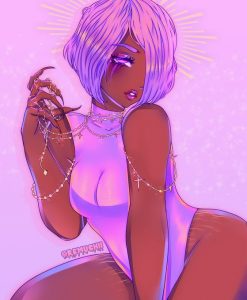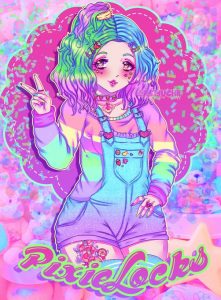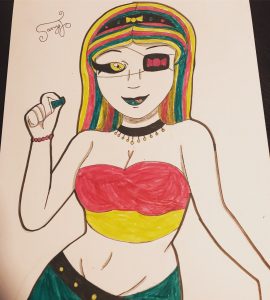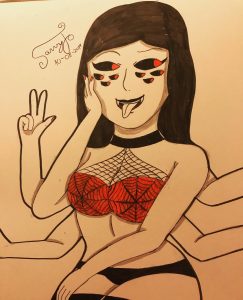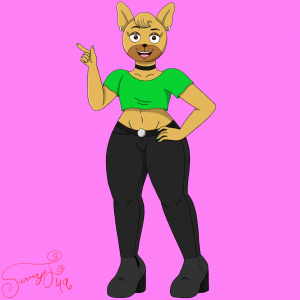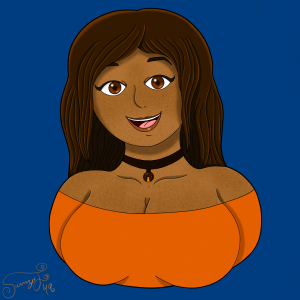My illustrations or style falls into the themes of weird, horror, and abstract. I’m interested in semi-realistic, detailed, emotions, and a controlled messy look. Experimenting with the mediums I like is fun and it help me create the look I’m going for. The medium I enjoy the most is watercolor, gouache, ink, and graphite. The top artists that has given and continue to give me inspiration over the years is Bill Sienkienwicz, Alex Ross, Allen Williams, James Gurney, and Junji Ito.
Some of my illustrations:
Bill Sienkiewicz
Mostly known as a comic book artist for Marvel and DC comics. He also worked on the graphic novel Stray Toasters. He did advertising campaigns for Nike and MTV. Posters for The Green Mile, Halloween, Dark Knight, The Grinch, Unforgiven, Resident Evil, and the 2006 Winter Olympics.
As of now he is freelancing.
What I like about his art is that it looks and feels different from other artists I usually looked at. The abstract forms in the foreground and backgrounds. Exaggerated proportions that looks accurate. Different textures through scratches, splatters, and even using bleach. The mixture of hard lines and soft tones of color creates strong contrast. He does all these things while keeping the realism skill he was known for in his early stages of his career. He mostly uses gouache and ink.
Bill Sienkiewicz work:
Alex Ross
An illustrator/comic book artist that worked for DC and Marvel for decades. He is known for his work on Kingdom Come, Uncle Sam, Star Wars, and other variety of DC and Marvel’s works. He has done work for Universal Studio’s Monsters. Some posters he worked on was Unbreakable, Glass, The Iron Giant, and even the Academy Awards. Ross was chosen by Apple Corps LTD to be commissioned as the first artist in over 30 years to paint the Fab Four. He also worked on some books as an author. For example, a book called Marvelocity is by Ross and it features work he has done for Marvel. Comic Buyer’s Guide Award for Favorite Painter was eventually retired because Alex Ross won the award so many times.
Alex Ross has mastered his craft. His work is very consistent. He is known for his American realism and rendering. The way he handles contrast with lighting and darks without using any ink and the way he layers paint is impressive. The accuracy on how he renders different textures and backgrounds is also great whether its smoke, motion blur, lasers, burns, buildings, water, fire, and reflective material. His renders make super heroes look more heroic as if they were real and he renders his comic panels as if he was making a single piece. From what I’ve seen Ross does all the work himself. The pencils and renders. Backgrounds and all the characters. What I like about his work is that the pencil phase has most of the end result done which makes the painting portion much easier. Plus, he does his paintings with gouache which is a medium I’m trying to get better with.
Some of his work:
If you have $10,000 – $30,000 to spare you can buy some of his original art.
James Gurney
A freelance illustrator. The author and illustrator of Dinotopias, Color and Light, and Imaginative Realism. Well known for his realistic illustrations of dinosaurs and ancient civilization. He coauthored The Artist’s Guide to Sketching, worked as a background painter for the animated film Fire and Ice. Did assignments for National Geographic magazine, painting reconstructions of Moche, Kushite, and Etruscan civilizations. WorLucasfilm, DreamWorks Animation SKG, Sony Imageworks, Blue Sky Entertainment, Rhythm and Hues, Disney. For his work he has been featured in a variety of magazines and museums in the country. For fun, self-promotion, and to teach others Gurney has a active youtube channel that he keeps up with.
People wondered how Gurney can illustrate dinosaurs realistically when they don’t exist, as if they were alive today. How can he understand color and light so well. Gurney is a dedicated plein air (outdoor) painter and sketcher, believing that making studies directly from observation fuels his imagination. He does these paintings mostly using gouache, casein, and other mediums that he carrys with him. I enjoy watching his videos of these paintings because they do help me paint better. His life drawing painting reminds of the impressionist style and that’s the style I want to achieve with gouache. When Gurney has to create a bigger and precise piece he does use oil. These two paragraphs doesn’t justify the work Gurney puts in. I encourage anybody that reads this to check more of Gurneys content especially his blogs and videos on techniques. For example, he developed his characteristic realistic renderings of fantastic scenes, often using posed models and handmade maquettes for reference. He goes over how to make these maquettes and how he makes a scene with them.
Some of Gurney’s work:
Junji Ito
Horror manga artist and writer. The creator of Uzumaki, Gyo, the Tomie series, and short horror stories published as collections. His horror stories has animation adaptations. Uzamaki and Tomie has live-action film adaptation (Tomie has a lot). He recently did a manga adaptation of Mary Shelley’s Frankenstein, he recieved a Eisner Award for it. He was working on Silent Hills with Hideo Kojima before it got cancelled.
As a horror fan when I discovered Junji and read some of his short stories I just wanted to read more. The stories were written well, but the build up to a creature reveal, a plot twist, and the character reactions to the horrific scenarios they are a part of. Junji draws accurate proportion figures with minimal detail, but if a character seems gloomy or suspicious they start to get more detail and looks different. Humans in his stories gets the horror treatment either internally and/or physically. Distorted grotesque features, deformed limbs, things coming out of their body parts, unusual expressions, and other things that’s hard to describe. Junji does a great job showing these physical features through his inking.
Some of Junji Ito’s work:
Inoue Takehiko
Another manga writer and artist. He has illustrated the mangas Real, Slam Dunk, and one of my favorite mangas Vagabond. He also has his own illustration book out. He has done work for the game Lost Odyssy (my favorite rpg).
I really enjoy the look and style of historical Japanese culture (also China and Korea) and seeing it in a manga is very cool (Vagabond) Takehiko semi-realistic style was different from the other manga I was reading. More accurate human forms and anatomy. His landscapes is great too. It really made the setting in the past more convincing. Takehiko handled folding in clothes well too.















